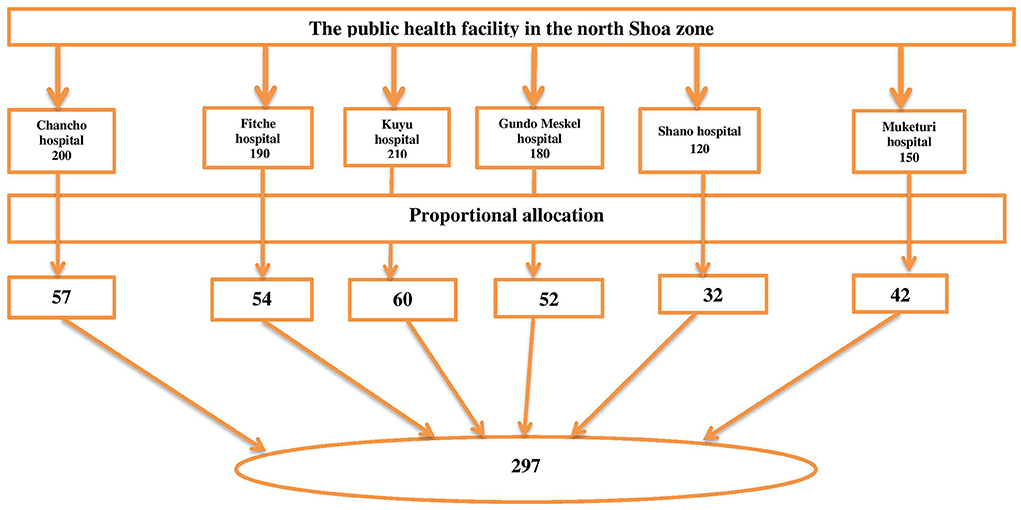Printed information, education, and communication materials utilization and associated factors among health care providers in central Ethiopia
- 1Department of Public Health, College of Health Sciences, Salale University, Fiche, Ethiopia
- 2Department of Midwifery, College of Health Sciences, Salale University, Fiche, Ethiopia
- 3Department of Nursing, College of Health Sciences, Salale University, Fiche, Ethiopia
- 4Department of Public Health, College of Health Sciences, Debere Markos University, Debere Markos, Ethiopia
Introduction: Information, education, and communication (IEC) is a combination of strategies, approaches, and methods that enable individuals, families, groups, organizations, and communities to play an active role in achieving, protecting, and sustaining their health. Healthcare providers are responsible for providing health education to the community through the use of different types of health learning materials. Printed IEC materials were damp and wasted without being used at the study area. Therefore, this study aimed to assess the utilization of printed IEC materials, and associated factors among health care providers in the north Shoa zone, Oromia regional state, Ethiopia.
Methods: A facility-based cross-sectional study was conducted in the North Shoa zone, Oromia region, Ethiopia. The simple random sampling technique was used to select 297 study participants. Data were collected using a self-administered questionnaire and entered into the Epi-data manager version 4.4.1 and exported to SPSS version 23 for data analysis. Bivariate and multivariate logistic regression analysis was performed to see the association between dependent and independent variables.
Result: A total of 281 health care providers participated in the study, with a response rate of 95%. Eighty-four percent of the study participants knew about printed IEC material. About 235 (83.6%) respondents ever used printed IEC material and 171 (60.9%) study participants used printed IEC material last month. About 259 (92.2%) participants had the intention of using IEC material in the future. Age [AOR, 0.27 95%CI (0.097–0.741)], sex [AOR, 1.928 95%CI (1.025–4.019)], marital status [AOR, 14.03 95%CI (1.4–20.8)], having enough time to provide health education [AOR, 2.53 95%CI (1.16–5.54)], and perceiving the importance of the IEC to provide basic concepts [AOR, 1.517 95%CI (1.07–3.1)] were significantly associated with the use of IEC material.
Conclusions: Generally, the results of this study indicated that the utilization of printed IEC materials was high. To increase utilization of printed IEC material, coordinated efforts were required from the federal government, regional government, non-government organizations, the zonal health bureau, and health facilities.
Introduction
Information, education, and communication (IEC) initiatives are based on the principles of preventative and primary health care (World Health Organization, 2001). IEC combines strategies, approaches, and methods that enable people, families, organizations, and communities to actively participate in achieving, protecting, and maintaining their health (Karnik et al., 2000). Health learning materials are teaching aids that provide health-related information and instruction to a specified audience (World Health Organization, 2001).
Printed health learning materials are the production of multiple copies of an original image usually using ink pressed onto paper (UNICEF, 2011). Printed IEC materials include newspapers, flyers, banners, leaflets, brochures, flipcharts, and posters (Towers, 2004). These materials can be developed for both literate and low-literate communities (National Institute of Public Health of Kosova., 2017). Printed IEC materials serve a variety of purposes, including educating patients about behavioral change, anxiety reduction, distress relief, and pain relief; increasing patient satisfaction; allowing patients to actively participate in their care, and enhancing informed choice (Bull et al., 2001).
Medical journals and clinical practice guidelines are popular routes for disseminating scientific information to healthcare professionals because they allow for a large distribution at a cheap cost (Maloreh-Nyamekye, 2013). The roles of IEC common to all countries involved educating people in health facilities or in communities (Giguère et al., 2012). At the health facility level, as in Ethiopia, health education was carried out among pregnant women as part of routine health care, especially during antenatal care visits (Maloreh-Nyamekye, 2013).
The non-use of the information, education, and communication materials have a critical impact on health service provisions such as antenatal care, family planning, and immunization service. In particular, family planning and the provision of antenatal care services are difficult without information, education, and communication materials (World Health Organization, 2001). If the IEC material is not used or does not reach the target audience, it has an economic effect on the government's investment. Based on author observations in various zonal health facilities and health bureaus, IEC materials were often damp and unused, which had an impact on the delivery of health services and the utilization of resources. In addition, this activity contradicts the government policy; “Information, Education, and Communication of Health shall be given the appropriate importance to enhance health awareness and to propagate the important concepts and practices of self-responsibility in health” (FDRMOH, 1993).
A different study conducted in different areas stated that different factors affect the use of IEC material; lack of knowledge, staff shortage, lack of time, lack of quality material, and language barrier (Abdelhafiz et al., 2020; Erfani et al., 2020; Paul, 2020). The study conducted in the Jimma zone revealed that professional categories, work experiences, graduate college, belief in the importance of IEC materials, perceived understandability of the materials, and belief to the extent to which printed IEC materials consider local context were predictors of the utilization of the printed IEC materials (Birhanu et al., 2011). The rationale of the study: Healthcare providers are responsible for providing education on health issues and preventive measures. They must ensure that the information is sufficient, effective, and positively impacts the quality and cost of care (Demir et al., 2009; Leep Hunderfund and Bartleson, 2010). The key to achieving these goals is health education. In 1978, the Declaration of Alma Ata put health education as one of the components of PHC. Health education was recognized as the most essential component of PHC to reach the goal of ‘health for all' (WHO-Unicef, 1978). In contrast, IEC materials were damp and wasted without being used at zonal health facilities and health bureaus. This had an impact on both health service delivery and resource utilization.
This research was carried out in the north Shoa zone, which is part of the Oromia regional state. According to a study conducted at the national level on the utilization of printed IEC material, printed IEC material utilization was low printed IEC material utilization was low (Birhanu et al., 2011). Because of the similarity of the health facility and health service delivery, the zone was chosen to represent central Ethiopia. Furthermore, the zonal health office identified printed IEC materials utilization as one of the main health education-related issues that needed to be addressed in order to facilitate an effective health education program at the health facility level. Therefore, assessing the use of printed IEC materials is critical to the effective implementation of government policy as well as the efficient use of resources. This study aimed to assess the utilization of printed information, education and communication materials, and associated factors among health care providers in the north Shoa zone.
Methods and materials
Study design, setting, and period
A facility-based cross-sectional study was employed in the north Shoa zone, Oromia region state, Ethiopia. The zone has a total area of 10,322.48 km square with 138.66 population density. The zone has 13 rural districts called Woreda and two town administrations. Fiche town is the capital city of the zone, is located 112 km from Addis Ababa, the capital town of Ethiopia, in the north direction. Based on the 2007 national population and housing census, the Zone has a total population of about 1,639,586 of which 717,552 are men and the rest were female. The majority of the populations (89.75%) are rural residents. The Zone has a total of 521,506 households with an average household size of 4.57 persons per household. The ethnic groups found in the zone include Oromo (84.33%), Amhara (14.99%), and others (0.68%). Orthodox Christians (92.43%) are the dominant religious group followed by Muslims (5.34%), and 1.61% were protestant followers. The zone has 64 health centers and five public hospitals that provide health care services to the community. The study was conducted from December 1, 2020, to December 30, 2020.
Population
All health professionals who work in a public health facility located in the North Shoa Zone, Oromia Region, Ethiopia were considered as the source population for the study and all randomly selected health professionals who work at the selected public health facility in the North Shoa Zone, Oromia Region, Ethiopia were considered as the study population. All health professionals who work in selected hospitals and willing to participate in this study were included. An individual unable to provide valid information due to a medical problem and on annual leave was excluded from the study.
Sample size and sampling procedures
To obtain the final sample size of the study, the single population proportion formula was used with the following assumption (Osborn and Daniel, 1984). The proportion of information, education and communication utilization was considered 68.0% (0.68), based on a previous study conducted in the Jimma zone among health professionals (Birhanu et al., 2011), Margin of error 5% (0.05) with a confidence level of 95% (two- sided alpha =0.05).
ni = initial sample size.
Z = standard normal value at 95% CI which is 1.96
P = proportion printed IEC materials utilization of which is 0.68
D = possible margin of error tolerated which is 5%.
The sample size is <10,000, then, the correction formula was used for the sake of sample size adjustment. n = n/1+ñ/N
Based on this, the sample size was 270. After considering a 10% non-response rate, the final sample size was 297. Six hospitals (specifically Chancho General Hospital, Kuyu General Hospital, Fitche General Hospital, Shano Primary Hospital, Gundo Meskel Primary Hospital, and Muke Turi Primary Hospital) were included in this study. The sample size was proportionally allocated to each hospital based on the number of caregivers from each health facility. The sample frame was prepared for each selected hospital from the staff profile documents. The random sampling technique was used to select study participants (Figure 1).
Data collection instruments and techniques
A structured questionnaire developed through the review of the literature was used. The questionnaire was initially prepared in English and translated into Afan Oromo and Amharic and again retranslated to English to check for inconsistencies or distortions in the meaning of words and concepts. The questionnaire consisted of sociodemographic characteristics, awareness and use of IEC material, and government and policy-related factors, health facility-related factors, and health professional-related factors assessment questions. Data were collected using a self- administered questionnaire and collected by ten public health officers from the selected hospital and supervised by two public health experts (MPH) from Salale University staff. To ensure data quality, the data collection instruments were pre-tested for relevance and clarity. The pre-testing process was conducted at 5% of the total sample size in Sandafa bake primary hospital. Consequently, the necessary measure was taken to correct the observed errors before entering the actual data collection process. The pretested data were not included in the main analyses because the data collection tool had been modified. Cronbach's alpha revealed that the tool's overall reliability was 0.81. The principal investigator provided data collectors and supervisors with training on the study's objective and data collection technique prior to the actual data collection process.
Data analysis
After data collection, each questionnaire was checked for completeness and consistency of the information obtained from the respondent. After this validation, the data were entered into the Epi-data manager version 4.4.1 to minimize errors and design the skipping pattern. Then the data were exported to SPSS version 23 for cleaning, editing, and analysis. The data were checked for missing values. Descriptive analysis (such as frequencies, percentages, means, and standard deviation) and inferential analysis was performed. Bivariate and multivariate logistic regression analysis was performed to see the association between dependent and independent variables. A p-values < 0.25 association study variables were transferred to multiple logistic regression models. The odds ratio with their 95 % confidence interval was calculated and the p-value < 0.05 was considered statistically significant in the multivariate model.
Ethical consideration
Ethical clearance was obtained from the Ethics Review Committee of Salale University. A support letter was obtained from the North Showa Zone Health Bureau and official permission was obtained from the selected hospital. Written consent was obtained from the respondent to confirm willingness to participate after explaining the objective of the study. Respondents were notified that they have the right to refuse or terminate at any point in the interview. The information provided by the respondents was kept confidential.
Result
Sociodemographic characteristics of the study participants
A total of 281 health care providers participated in the study, with a response rate of 95%. Of the total study participants, 205 (73%), 76 (27%) were male and female, respectively. The majority of the respondents' age was 25–30 and constitutes about 189(67.3%) of the respondents. Concerning residence, 233 (82.9%) and 48 (17.1%) respondents lived in urban and rural settings, respectively. Regarding the marital status of the respondents, more than half 165(58.7%) were married. More than half 150 (53.4%) of the study participants' service experience years were 1–5 years. The majority of the study participants' qualifications were nursing 144 (51.2%) and followed by midwifery 56 (19.9%) (Table 1).
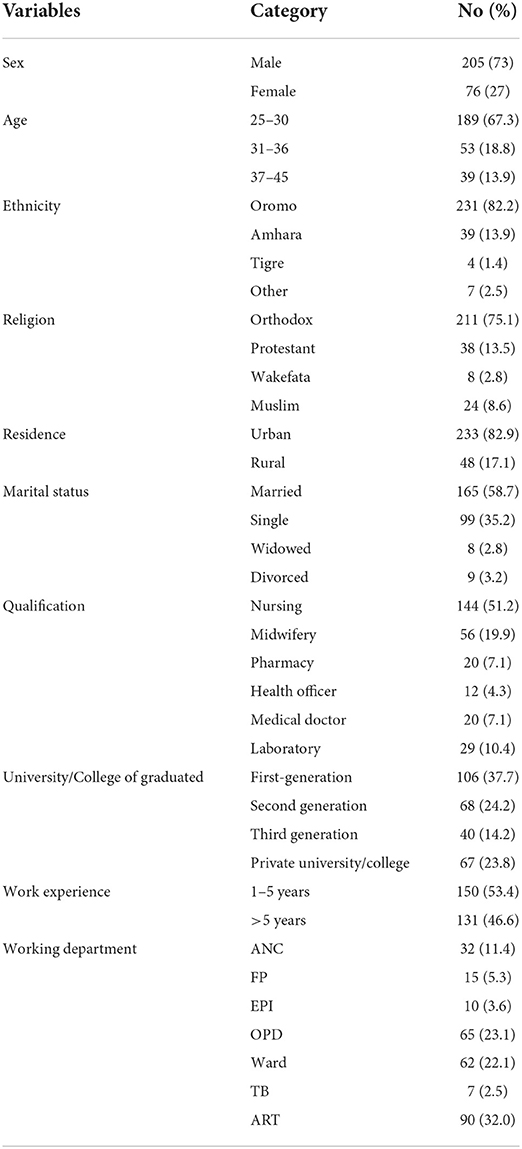
Table 1. Socio-demographic characteristic of study participants to assess printed information, education, and communication materials, and associated factors in the public health facility of the northern Showa zone from December 1, 2020, to December 30, 2020.
Printed IEC material utilization
Of the study participants, 235(84%) participants had heard about the IEC material. Eighty-four percent of the study participants knew about printed IEC material and 46 (16%) of health care providers did not know about printed IEC materials (Figure 2). Of the study participants 35 (83.6%) respondents had ever used printed IEC material and 171(60.9%) study participants used printed IEC material within the last month. Approximately 30% of the study participants always used IEC material. Most of the participants used posters followed by flip charts and leaflets. Most of the study participants used IEC material in the ANC room and the wards. The majority of 259 (92.2%) participants had the intention to use IEC material in the future ((Tables 2, 3). The majority of participants did not use IEC due to the inaccessibility of IEC material 84 (29.9%) and the lack of appropriated IEC material 84 (29.9%) (Figure 3).
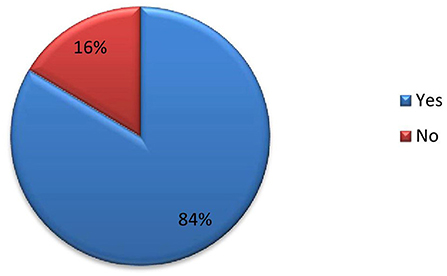
Figure 2. Awareness of health professionals about printed IEC material in the health facility of the North Shoa zone, Oromia, Ethiopia.
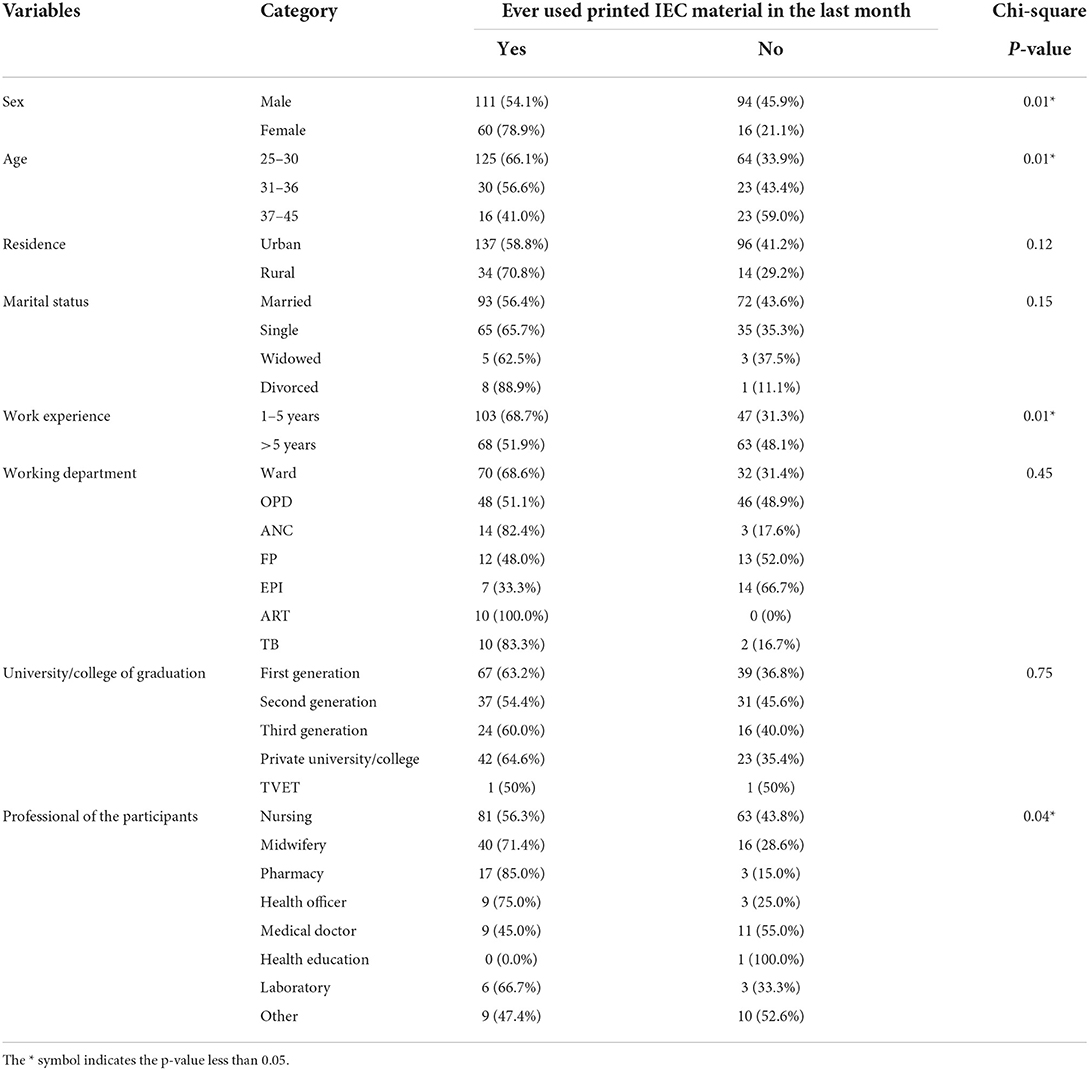
Table 2. Comparison of socio-demographic variables with the utilization of printed information, education, and communication materials by health care providers in the north Shoa zone, 2020.
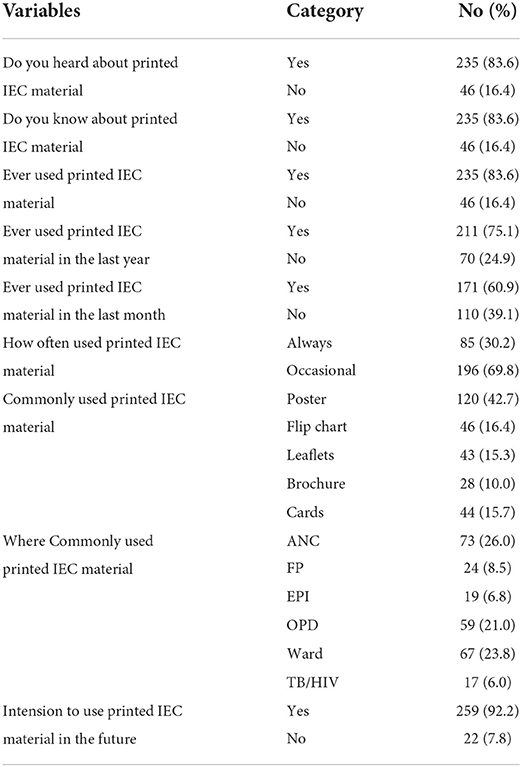
Table 3. Information education and communication materials utilization to assess printed information, utilization of education and communication material utilization, and associated factors at the public health facility of the northern Showa zone from December 1, 2020, to December 30, 2020.

Figure 3. Reason for not using IEC material among health professionals in the north Shoa zone, Oromia, Ethiopia.
Factors associated with IEC material utilization
To identify the associated factors with the use of IEC material among the respondents, a binary logistic regression was computed. Variables with a P-value < 0.25 in bivariate analysis were entered into multivariate analysis to predict factors associated with the utilization of IEC materials with a p-value < 0.05. Consequently, age, sex, marital status, having sufficient time to provide health education, and perceiving the importance of IEC material to provide basic concepts were significantly associated with the utilization of IEC material.
The respondents' ages of 25–30 years were 73% less likely to use IEC material than the participants whose ages were 37–45 [AOR, 0.27 95%CI (0.097–0.741)]. Male participants were two times more likely to use printed IEC materials than female participants [AOR, 1.928 95%CI (1.025–4.019)]. The married study participants were 14 times more likely to use printed IEC material than the counterpart [AOR, 14.03 95%CI (1.4–20.8)]. Respondents who perceived that IEC material was important to provide basic information were 2.5 times more likely to use IEC material than the counterpart [AOR, 2.53 95%CI (1.16–5.54)]. Participants who had sufficient time to provide health education were 1.5 times more likely to use printed IEC material than the counterpart [AOR, 1.517 95%CI (1.07–3.1)] (Table 4).
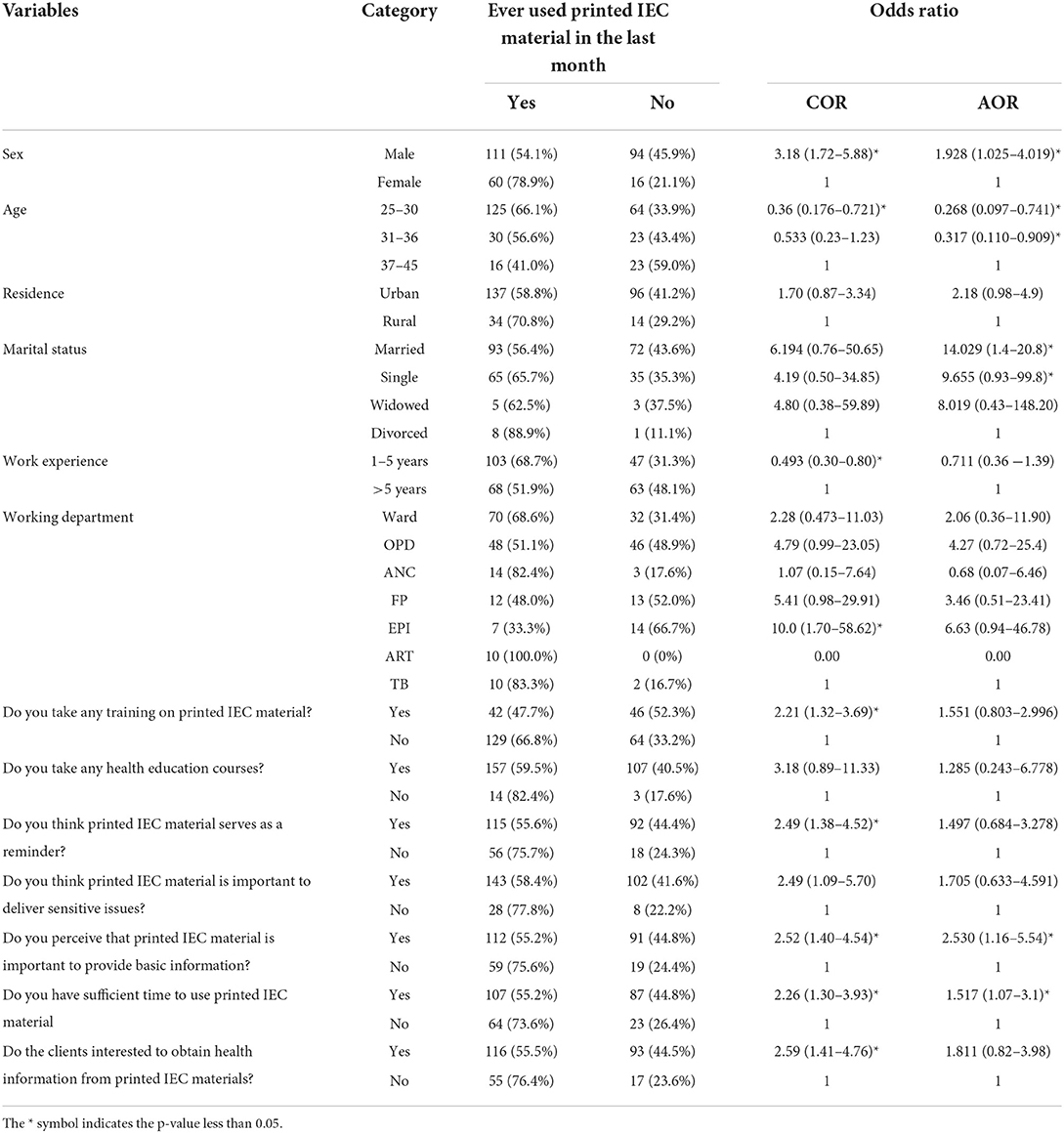
Table 4. Factors associated with IEC material utilization to assess printed information, education and communication material utilization, and associated factors at the public health facility of the northern Showa zone from December 1, 2020, to December 30, 2020.
Discussion
Health education helps people make wise choices about their health and the quality of life of their community. Health learning materials are teaching aids that provide information and instruction about health specifically directed to a clearly defined group or audience (Jira, 2004; UNICEF, 2011). This study aimed to assess the utilization of IEC material and associated factors among health care providers in the North Shoa area.
Our study finding indicated that, 83.6% had ever used IEC materials, 60.9% have used them in the past year and 75.1% have used them in the past month. Around half of the study participants used posters, followed by flip charts 16.4%. Most of the study participants used IEC materials at the ANC, followed by the wards. Ninety-two percent of the study participants expressed an intention to use printed IEC material in the future. One-third of the study participants did not utilize the IEC material due to the inaccessibility of the printed IEC material as well as due to the lack of appropriate printed IEC material. Age, sex, marital status, having sufficient time to provide health education, and perceiving IEC as more important were significantly associated with the utilization of IEC material.
Our study finding indicated that 83.6% participants had used printed IEC material. This finding was higher than a study conducted in the Jimma zone (Birhanu et al., 2011), Saudi Arabia (Aldossary et al., 2013), and Texas (Reeve et al., 2004). The possible justification for this inconsistency was due to a difference in study periods and a difference in study participants. The studies conducted in Saudi Arabia and Texas were conducted among nurses. The current study was conducted among different health professionals like public health, medical doctors, and pharmacists. The other factor for inconsistency was a difference in study period, as all previous research was done about 10 years ago.
We found that most of the study participants have used posters, followed by flipcharts. This finding was consistent with the study conducted in the Jimma zone (Birhanu et al., 2011). According to a previous study conducted in Jimma zone, posters have many advantages over other types of printed IEC materials, including the ability to transmit information on their own and the ability to be posted anywhere a large number of people can see them. The possible justification for this finding was that most of the printed IEC materials produced and disrupted at the national and local levels were more focused on posters and flipcharts. At the health facility level, easily access printed IEC materials was poster and flipchart.
Our study findings identified that the most common reasons for not using printed IEC materials were a lack of appropriate IEC materials and a lack of printed IEC materials. This finding was in line with the study conducted in the Jimma zone (Birhanu et al., 2011) and Texas (Reeve et al., 2004). The previous study conducted in the Jimma zone revealed that the majority of the printed IEC materials were not prepared in culturally acceptable ways. The rational justification for this study finding was that most of the printed IEC materials in our counter were prepared in federal and international languages, and also most of the material was prepared for specific departments such as maternal and child health and HIV/AIDS.
The other factors identified under the descriptive analysis were job overload and a lack of interest in utilizing printed IEC materials. This finding was in line with the study conducted in the Jimma zone (Birhanu et al., 2011) and Texas (Reeve et al., 2004). This finding was contradicted by health promotion science. Different articles and books indicate that using printed IEC materials is important to reducing job burdens and making health education provision more interesting.
The rationale we employed for justification of this study's findings was that human resource constraints in the counter because, most of the time, the health professional provided a lot of service in one place. To address the issue of a lack of interest in the use of printed materials, the responsible body should focus on providing training on the importance of printed IEC materials.
We found that the respondents' whose age is between 25 and 30 years are less likely to use printed IEC material than the participants whose age was 37 and 45. This finding was in line with the study conducted in the Jimma zone (Birhanu et al., 2011). The rational justification for this finding was that experienced healthcare providers prioritize all activities over inexperienced ones. In addition, experienced individuals more understand the importance of the printed IEC material and obey the government's direction easily. The federal Democratic Republic of Ethiopian health policy focuses on disease prevention rather than cure. As a result, IEC materials were chosen as the primary strategy for implementing this policy.
Our study finding revealed that respondents who perceived that IEC material was important to provide basic information were significantly associated with the printed IEC material used. This finding was in line with the study conducted in the Jimma zone (Birhanu et al., 2011). The rational justification for this finding was that an individual who developed a positive attitude toward printed IEC materials important for providing health education was more likely to practice printed IEC materials at a higher level than an individual who developed a negative attitude toward printed IEC materials.
The findings indicate that participants who had enough time to provide health education were significantly associated with the printed IEC materials used. This finding was in line with the study conducted in Texas (Reeve et al., 2004) and Saudi Arabia (Aldossary et al., 2013). The possible justification for this finding was that most of our counter healthcare providers perceived using printed IEC material as time-consuming or as an additional activity. Therefore, to overcome this problem, the concerned body should focus on the provision of refreshment training on the importance of printed IEC materials. Different guidelines and books indicate that IEC materials are important to reduce the job burden.
Strengths and limitations of the study
This study had different strengths; first, this study was the second study at the national level. Second, the study was conducted at a hospital in the north Shoa zone in order to represent the findings to central Ethiopians by including various health service delivery provided at various levels of facility. On the contrary, this study had a limitation; the study design was cross-sectional, making it difficult to gain an in-depth understanding of factors related to poor practice of printed IEC materials.
Conclusion and recommendation
Generally, the results of this study indicated that the utilization of printed IEC materials was high. Age, sex, marital status, having sufficient time to provide health education, and perceiving printed IEC martial important to provide basic concepts were significantly associated with the utilization of IEC material. To increase utilization of printed IEC material required coordinated efforts from the federal government, regional government, non-governmental organization, zonal health bureau, and health facility. To increase the utilization of printed IEC material, the federal minister of health and regional health bureau should give attention to printed IEC materials. In addition, the federal minister of health and regional health bureau should avail appropriated printed IEC materials for zonal and woreda health bureau. The regional health bureau and the health facility should establish a strong link in the distribution and collection of IEC materials.
The non-government organization should focus on IEC material printing preparation and building capacity for health professionals on IEC material utilization.
Data availability statement
The raw data supporting the conclusions of this article will be made available by the authors, without undue reservation.
Ethics statement
The study conforms with the principles outlined in the Declaration of Helsinki (WMA, 2001). Ethical clearance was obtained from the Ethics Review Committee of Salale University. A support letter was obtained from the North Showa Zone health bureau and official permission was obtained from the selected hospital. Written consent was obtained from the respondent to confirm willingness to participate after explaining the objective of the study. Respondents were notified that they have the right to refuse or terminate at any point in the interview. The information provided by the respondents was kept confidential.
Author contributions
All authors listed have made a substantial, direct, and intellectual contribution to the work and approved it for publication.
Funding
The Salale University supported this research work. The sponsors had no role in study design, data collection, analysis, decision to publish, or manuscript preparation.
Acknowledgments
First of all, we would like to praise God for His help in each step of our life and in conducting this research. Next, we thank the Salale University Research and Community Service Coordinator's Office for arranging this opportunity. Finally, we acknowledge the health facilities from which the data were collected and the study participants for their cooperation.
Conflict of interest
The authors declare that the research was conducted in the absence of any commercial or financial relationships that could be construed as a potential conflict of interest.
Publisher's note
All claims expressed in this article are solely those of the authors and do not necessarily represent those of their affiliated organizations, or those of the publisher, the editors and the reviewers. Any product that may be evaluated in this article, or claim that may be made by its manufacturer, is not guaranteed or endorsed by the publisher.
Abbreviations
FDREMOH, Federal Democratic Republic of Ethiopia Ministry of Health; HIV, Human Immunodeficiency Virus; IEC, Information Education Communication; SPSS, Statistics Package for Social Science; WHO, World Health Organization.
References
Abdelhafiz, A. S., Mohammed, Z., Ibrahim, M. E., Ziady, H. H., Alorabi, M., Ayyad, M., et al. (2020). Knowledge, perceptions, and attitude of egyptians towards the novel coronavirus disease (COVID-19). J. Community Health 45, 881–890. doi: 10.1007/s10900-020-00827-7
Aldossary, A., Barriball, L., and While, A. (2013). The perceived health promotion practice of nurses in Saudi Arabia. Health Promot. Int. 28, 431–41. doi: 10.1093/heapro/das027
Birhanu, Z., Godesso, A., Jira, C., and Morankar, S. (2011). Assessment of production and distribution of printed information education communication (iec) materials in ethiopia and utilization in the case of jimma zone, oromiya national regional state: A cross sectional study. Ethiopian J. Health Sci. 21, 77–83.
Bull, F. C., Holt, C. L., Kreuter, M. W., Clark, E. M., and Scharff, D. (2001). Understanding the effects of printed health education materials: which features lead to which outcomes? J. Health Commun. 6, 265–79. doi: 10.1080/108107301752384442
Demir, S. G., Bulut, H., and Dal, Ü. (2009). Student's experience with developing patient education materials. Proc. Soc. Behav. Sci. 1, 2828–2831. doi: 10.1016/j.sbspro.2009.01.503
Erfani, A., Shahriarirad, R., Ranjbar, K., Mirahmadizadeh, A, and Moghadami, M. (2020). Knowledge, attitude and practice toward the novel coronavirus (covid-19) outbreak: a population-based survey in Iran. Kbsnews. World Health Organ. 13, 2–3.
Giguère, A., Légaré, F., Grimshaw, J., Turcotte, S., Fiander, M., Grudniewicz, A., et al. (2012). Printed educational materials: effects on professional practice and healthcare outcomes. Cochrane Database Syst. Rev. 10, CD004398. doi: 10.1002/14651858.CD004398.pub3
Jira, C. (2004). Introduction to health education for health extension trainees in Ethiopia health ethics and health laws. Public Health.
Karnik, K., Larivee, C., Jha, S., and Narain, J. P. (2000). Information, Education and Communication: A Guide for AIDS Programme Managers, 1–35. Available online at: https://apps.who.int/iris/bitstream/handle/10665/205344/B0224.pdf?sequence=1&isAllowed=y
Leep Hunderfund, A. N., and Bartleson, J. D. (2010). Patient education in neurology. Neurol. Clin. 28, 517–536. doi: 10.1016/j.ncl.2009.11.002
Maloreh-Nyamekye, T. (2013). The impact of information, education and communication (IEC) strategies in malaria prevention and control during pregnancy (Ph. D. Thesis). Robert Gordan University, Aberdeen, UnitedKingdom.
National Institute of Public Health of Kosova. (2017). Guidelines for the Production of Health Education Materials.
Osborn, J. F., and Daniel, W. W. (1984). Biostatistics: a foundation of analysis in the health sciences. J. R. Stat. Soc. Ser. A 147, 109. doi: 10.2307/2981748
Paul, A. (2020). Knowledge attitude and practice towards novel corona virus among Bangladeshi People Implications for mitigation measures. Medrxiv 1–30. doi: 10.1101/2020.05.05.20091181
Reeve, K., Byrd, T., and Quill, B. E. (2004). Health promotion attitudes and practices of Texas nurse practitioners. J. Am. Acad. Nurse Pract. 16, 125–133. doi: 10.1111/j.1745-7599.2004.tb00383.x
Towers, H. (2004). Information, Education, and Communication Materials and Caring for People Living with HIV/AIDS. Available online Available online at: https://path.azureedge.net/media/documents/CP_vietnam_iec_mat_caring_plwh.pdf
UNICEF (2011). Health Education, Advocacy and Community Mobilisation, Part 1, p. 20–5. Available online at: http://www.open.edu/openlearnworks/pluginfile.php/71947/mod_resource/content/1/HE_Final_Part_1_cropped_Feb_2011.pdf
WHO-Unicef (1978). Alma-Ata 1978 primary health care. in International Conference on Primary Health Care (WHO; Unicef). p. 63.
World Health Organization (2001). Information, Education and Communication: Lessons From the Past Perspectives for the Future. World Health Organization. Available online at: https://apps.who.int/iris/handle/10665/67127
Keywords: IEC, health information, health communication, Ethiopia, health learning materials
Citation: Geleta TA, Deriba BS, Dirirsa DE, Beyane RS, Nigussie T, Legesse E, Jemal K, Gemeda D, Debela SA and Workneh AA (2022) Printed information, education, and communication materials utilization and associated factors among health care providers in central Ethiopia. Front. Commun. 7:872215. doi: 10.3389/fcomm.2022.872215
Received: 09 February 2022; Accepted: 27 July 2022;
Published: 18 August 2022.
Edited by:
John Parrish-Sprowl, Purdue University Indianapolis, United StatesReviewed by:
Howeida Hassan Abusalih, Princess Nourah Bint Abdulrahman University, Saudi ArabiaNeeti Rustagi, All India Institute of Medical Sciences Jodhpur, India
Copyright © 2022 Geleta, Deriba, Dirirsa, Beyane, Nigussie, Legesse, Jemal, Gemeda, Debela and Workneh. This is an open-access article distributed under the terms of the Creative Commons Attribution License (CC BY). The use, distribution or reproduction in other forums is permitted, provided the original author(s) and the copyright owner(s) are credited and that the original publication in this journal is cited, in accordance with accepted academic practice. No use, distribution or reproduction is permitted which does not comply with these terms.
*Correspondence: Tinsae Abeya Geleta, bakoabeya@gmail.com
 Tinsae Abeya Geleta
Tinsae Abeya Geleta Berhanu Senbeta Deriba
Berhanu Senbeta Deriba Dejene Edosa Dirirsa
Dejene Edosa Dirirsa Rebik Shukure Beyane
Rebik Shukure Beyane Tadesse Nigussie
Tadesse Nigussie Elsabeth Legesse
Elsabeth Legesse Kemal Jemal3
Kemal Jemal3 